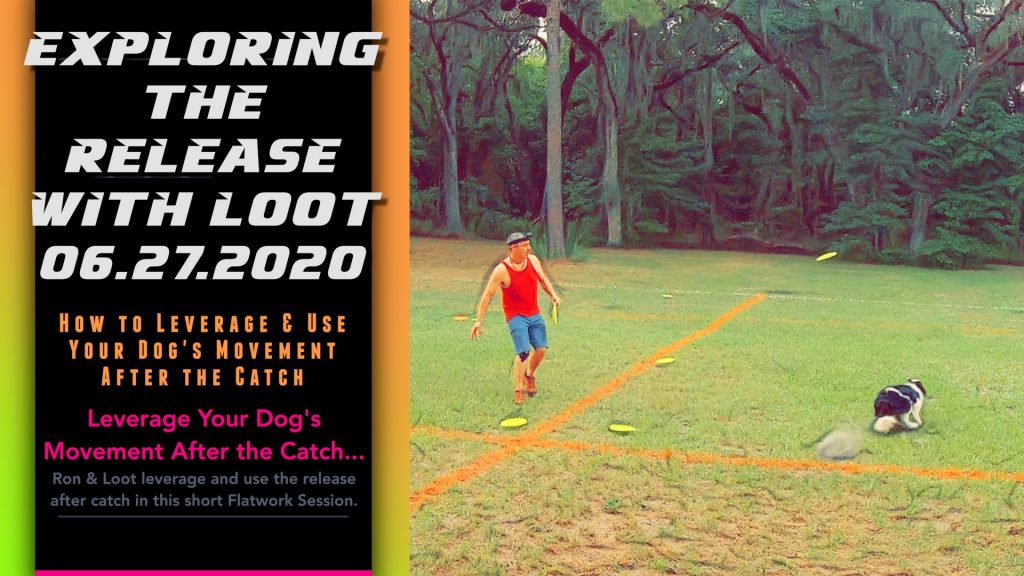
Leveraging the Release | Transitions, Team Movement, and Disc Management With the Unbalanced Dog
This piece is building off of Routine Building | Stop Putting the Cart Before the Horse piece from a few days ago and is Part II of the Release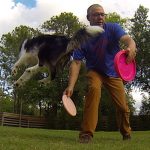 Release has many meanings in disc. Throws and throw variations can be referred to as releases. Sometimes you talk about the dog releasing something, the toy, or the environment, as in to stop... More After the Catch series that started with:
Release has many meanings in disc. Throws and throw variations can be referred to as releases. Sometimes you talk about the dog releasing something, the toy, or the environment, as in to stop... More After the Catch series that started with:
Epic Team Movement | How to Shape and Control Your Dog’s Movement After Catch
Loot is an unbalanced dog. He has a strong preference for counter clock movement. His reliable counter clockwise release after any catch is of great benefit to team movement, routine building, and disc management. This piece explores the usage of the release after catch of the unbalanced dog.
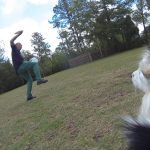 Out to the side of the handler is the Flank. If the dog is out to the handler's right or left the dog is on Flank. If the dog is moving with the... More | 1:29 – 2:16 – Throwing for Disc ManagementDisc Management is a disc dog term that describes management and organization of discs throughout the routine. Disc Management is a scored category in most disc dog freestyle organizations and has great impact... More | 2:18 – 3:20 – Throwing for Cued Drop
Out to the side of the handler is the Flank. If the dog is out to the handler's right or left the dog is on Flank. If the dog is moving with the... More | 1:29 – 2:16 – Throwing for Disc ManagementDisc Management is a disc dog term that describes management and organization of discs throughout the routine. Disc Management is a scored category in most disc dog freestyle organizations and has great impact... More | 2:18 – 3:20 – Throwing for Cued DropWorking With the Unbalanced Dog
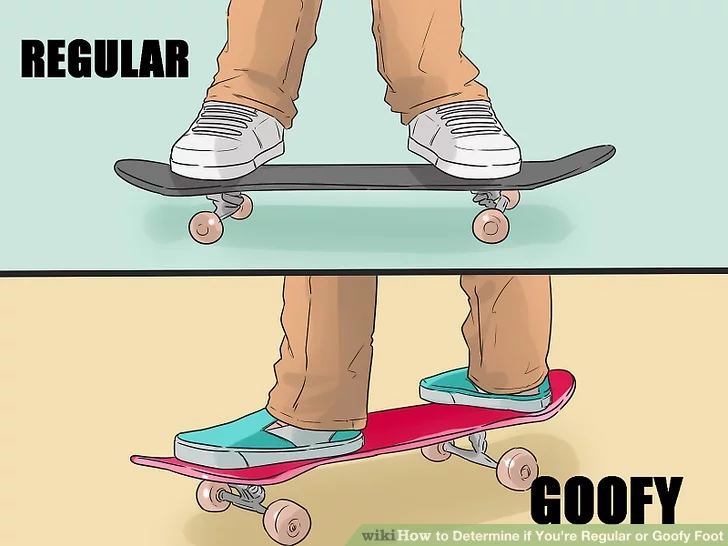
Dogs have a preference for movement that is illustrated by their natural choice of their lead foot. Some dogs like to lead with their left foot, and some with their right. It’s similar to right and left handedness in humans or regular and goofy foot in board sports.
This choice of lead is based upon the situation and the dog’s natural preference. When a dog is turning, the natural, more athletic lead should be the inside leg – that would be left leg lead for counter clock and a right leg lead for clock.
Loot has a strong preference for the counter clock, or left legged lead. This preference translates into a strong desire to turn and run in the counter clockwise direction. Most dogs are unbalanced, with a truly balanced dog being a rarity. Epic is quite balanced, but he has a slight counter clock preference.
It is not necessary nor desirable to change the dog’s preference, any more than it would be to make a left handed child write or throw right handed. Creating ambidextrous movement may not be possible, and will eliminate the consistency of the natural movements we’re going to rely on with Loot in this exploration of movement after the catch.
Creating some competence in the other direction or exercising the ability is a good idea, but eliminating or “training out” natural movements and physical preferences is probably not a good idea.
Release Demonstration | 0:15 – 0:55
This preference for counter clock movement is readily evident as you can see in this quick warm up and demonstration. Green is clock and blue is counter. Loot peels off from clock in order to go counter. This peeling off is nearly 100% reliable, and that is a good thing – very useful.
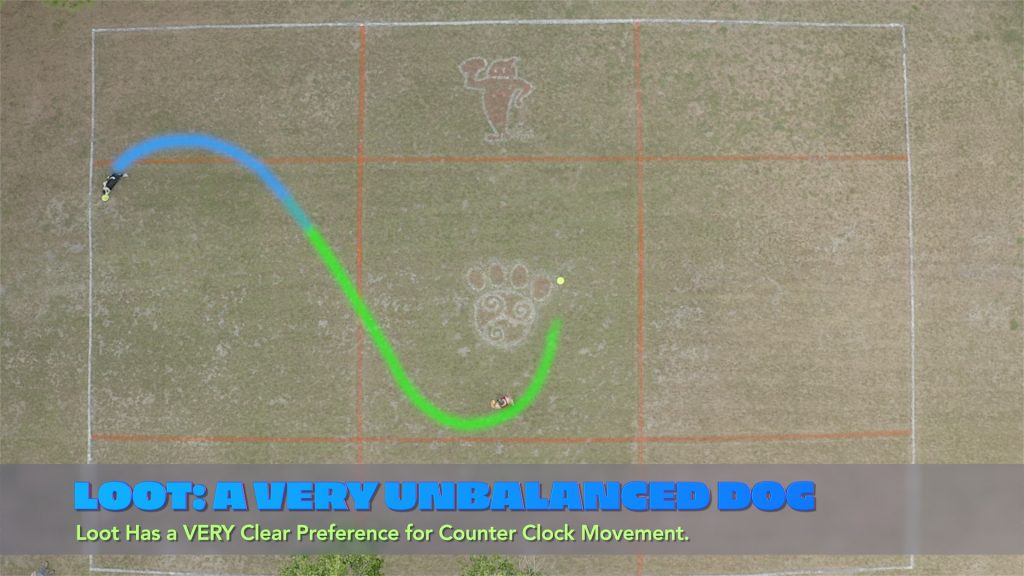
When on counter, Loot likes to stay on counter. This is nearly 100% as well. Interestingly enough, Loot does not catch as well on counter as he does on clock. This is a common occurrence with highly unbalanced dogs, in my experience. If your dog is really strong on clock, you might want to explore some catching on counter to see what happens. Si was an entirely different dog when it came to leaping and catching while running on counter.
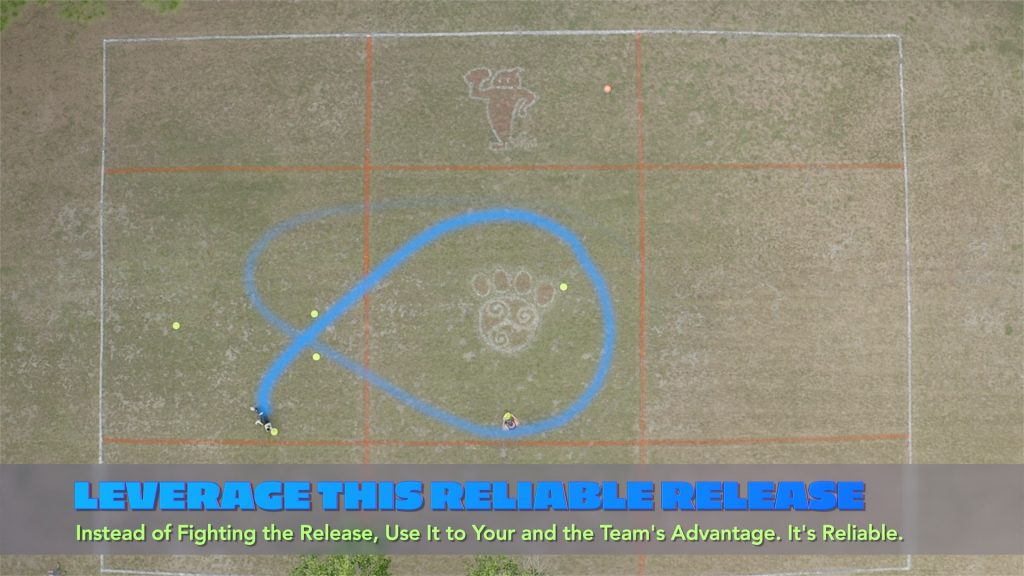
Pushing Loot to Turn Clock | 0:58 – 1:29
The first one worked, largely because of perfect placement and timing. If you look close you can see the placement inside the dog’s line, the disc is turning over a bit, and the handler is moving in that direction. This is not the first time I’ve done it and we have worked it, but it is quite unreliable. It can be done, but should it?
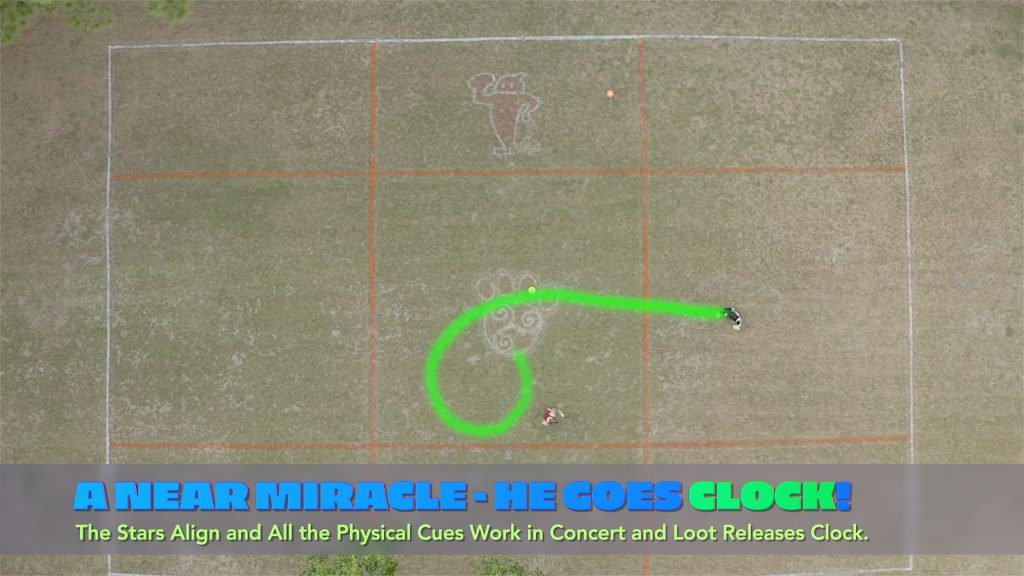
The rest of the reps failed rather spectacularly, as you can see, even though a couple of them looked like they might work while playing out.
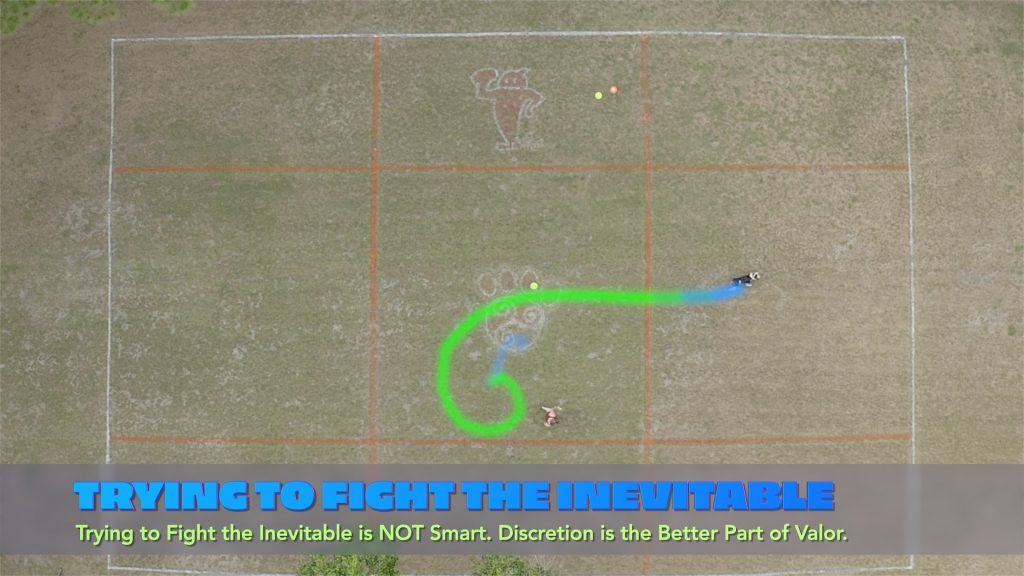
I have no problem not “fixing this”, and neither should you. It would be nice if Loot turned that way, but it’s not necessary, and his automagic left turn after catch is really quite useful and predictable. Far more useful that Epic’s balanced release, which is not nearly as predictable and, therefore, far less useful when it comes to team movement, disc management, and routine building.
Be Careful What You Wish For…
Throwing for Disc Management | 1:29 – 2:16
Given the reliable peeling off on clock and marching on while on counter, disc management should be a breeze. All I have to do is throw the disc so the reliable release happens over top the pile of discs.
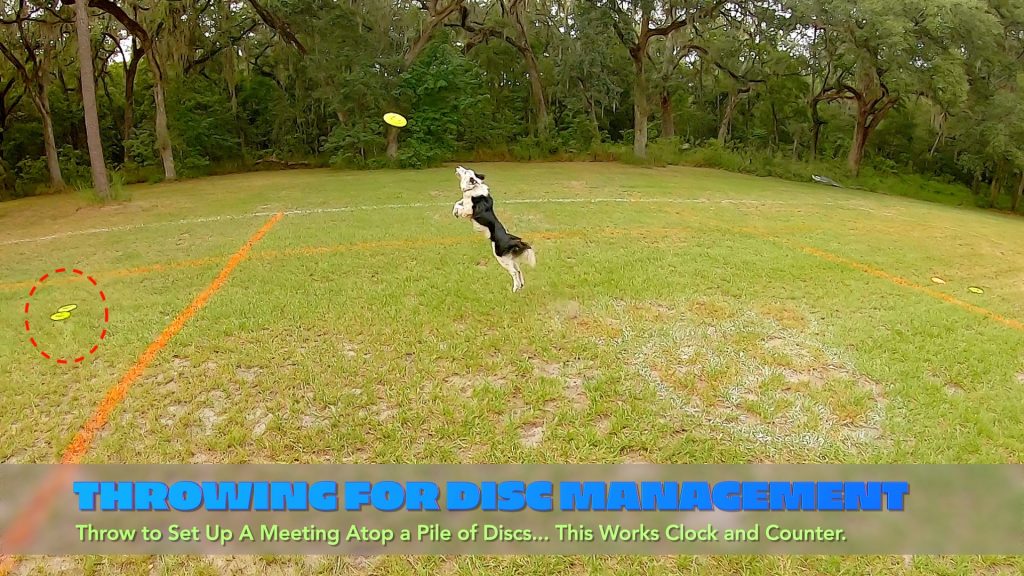
With the clockwise throws, I take particular care to throw to the right side of the pile of discs while Loot is on Flank. I can throw short of the pile and he will approach directly from the side or I can throw at the same depth as the pile or past it to bring him back towards me after the catch. This distance management is very useful for dealing with the wind.
On the counter clock throws, I will also throw to the right of the pile, close to it if I want a linear approach, or far to the right and/or short to get a lateral approach. I can also throw to the left of the discs to have him approach from the left side of the pile for wind purposes.
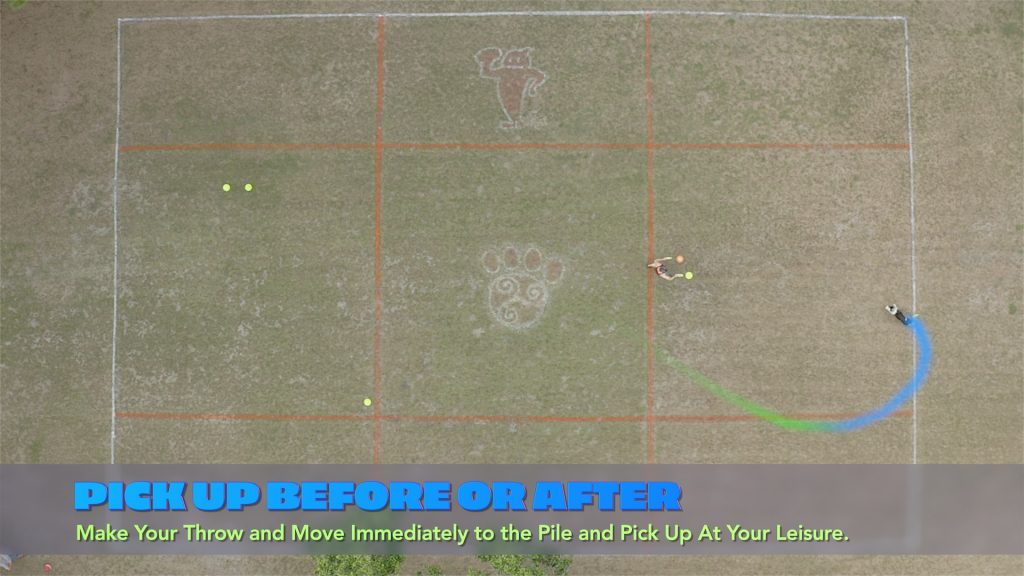
The key here is that, with the unbalanced dog, because you know how the release is going to go down it is very easy to throw FOR disc management. Use your knowledge of your dog’s movement to your advantage. Where you throw matters.
Throwing for the Drop | 2:18 – 3:30
Throwing for the cued Drop has the same mechanics as the throwing for disc management. You can create piles of discs on the field quite easily by actually throwing for the cued Drop.
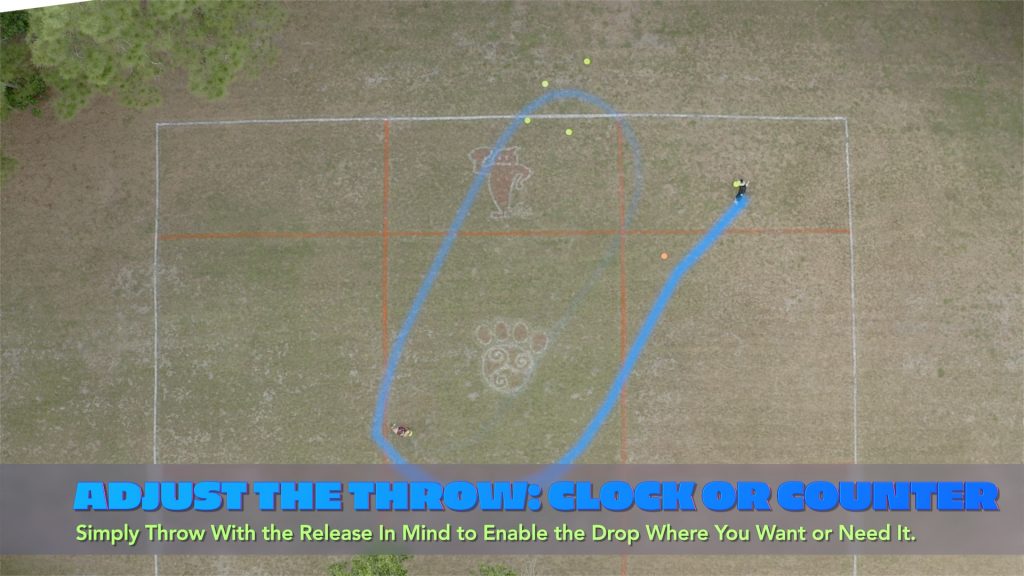
In this situation, my plan was to drop right around the Hero dude logo. Outside the couple of misses and bobbles, Loot placed those discs pretty well for me. It would be easy to make a toss, Read the Release, and meet him atop that pile.
The trick becomes throwing to set the dog’s line for the next trick after the cued Drop, which gets much easier after you’ve thrown for disc management, thrown for the cued Drop, and thrown for handling the wind.
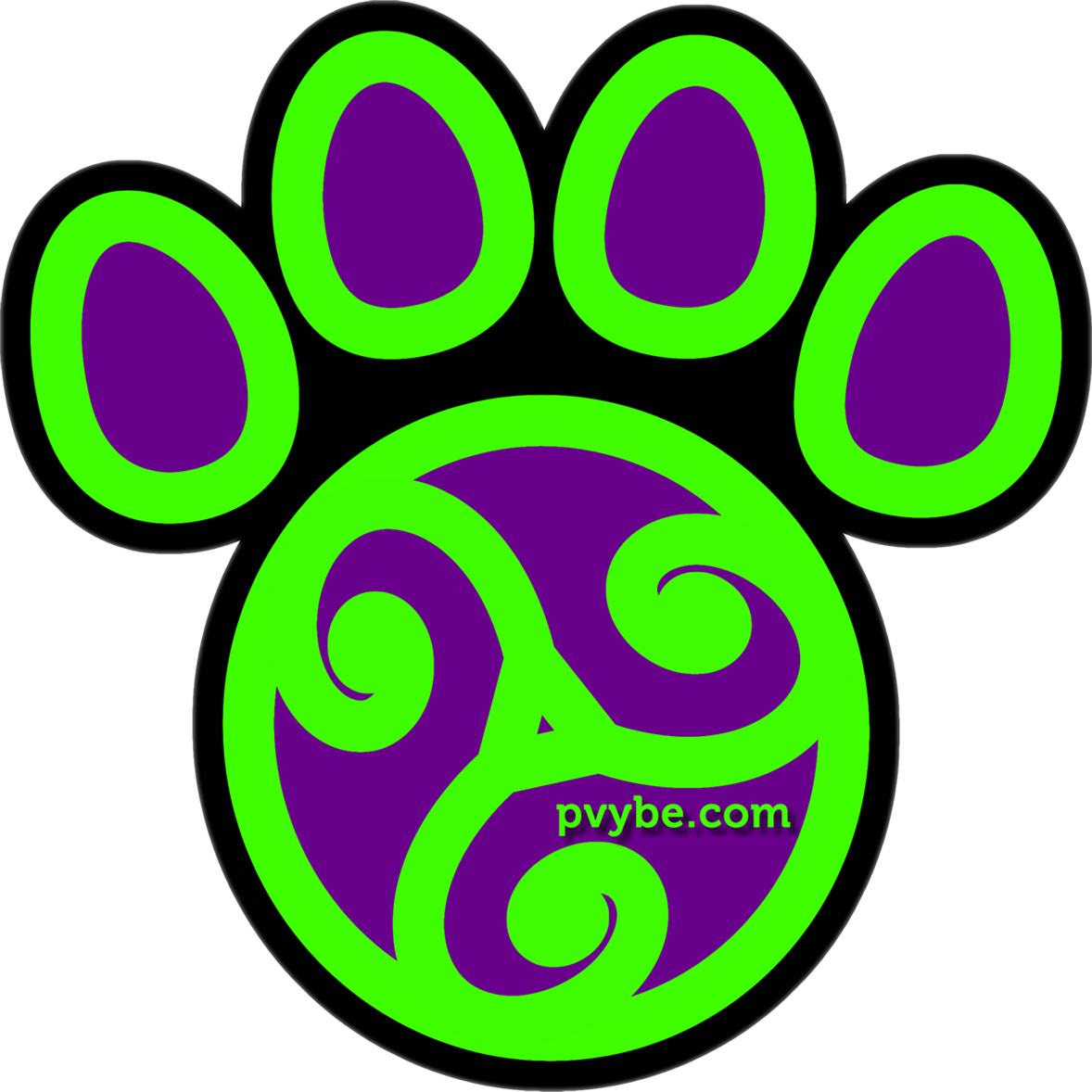


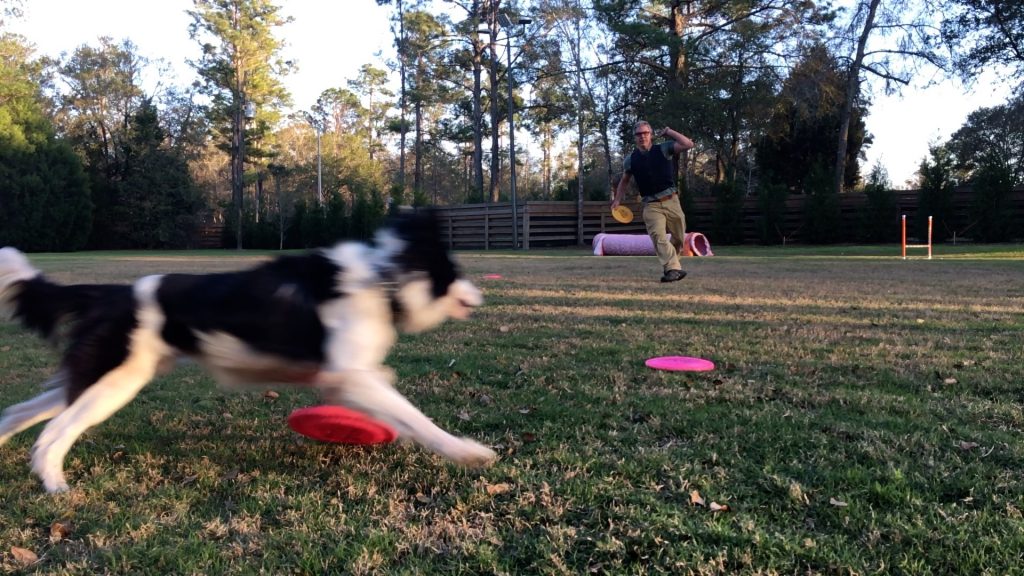
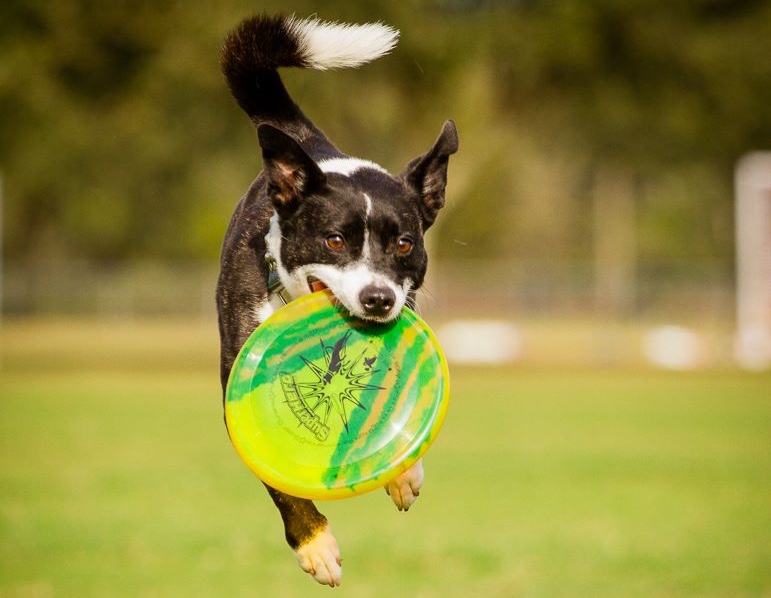
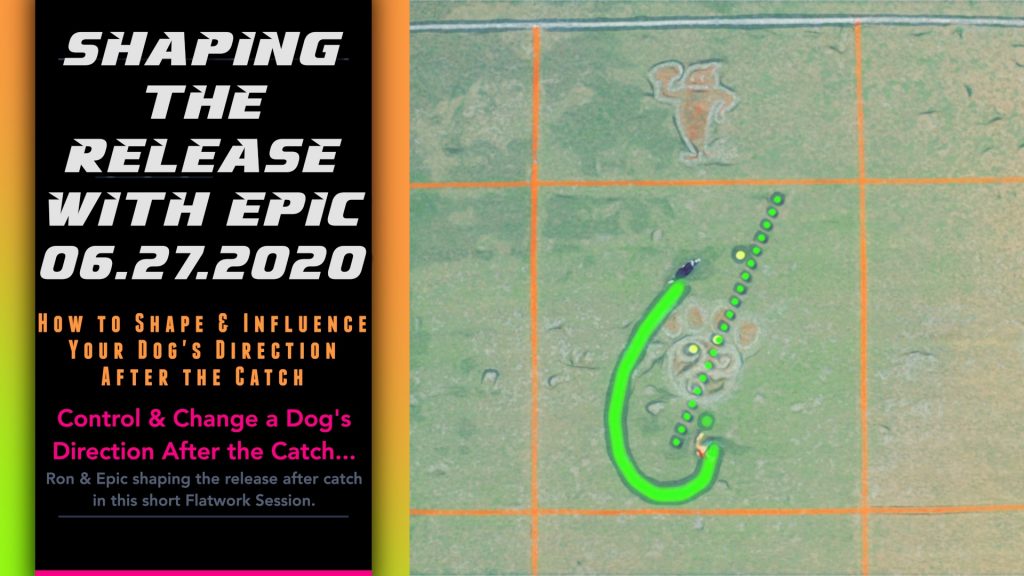
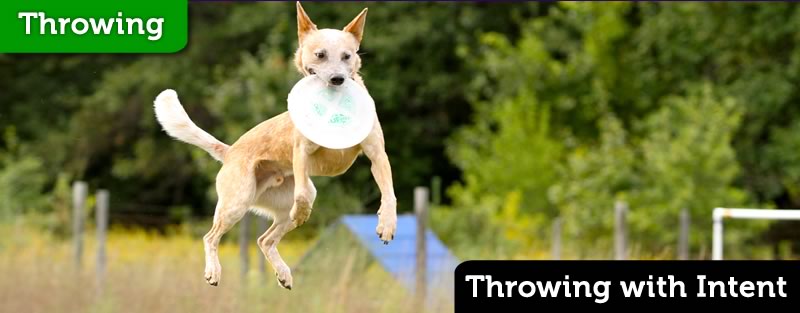

Responses